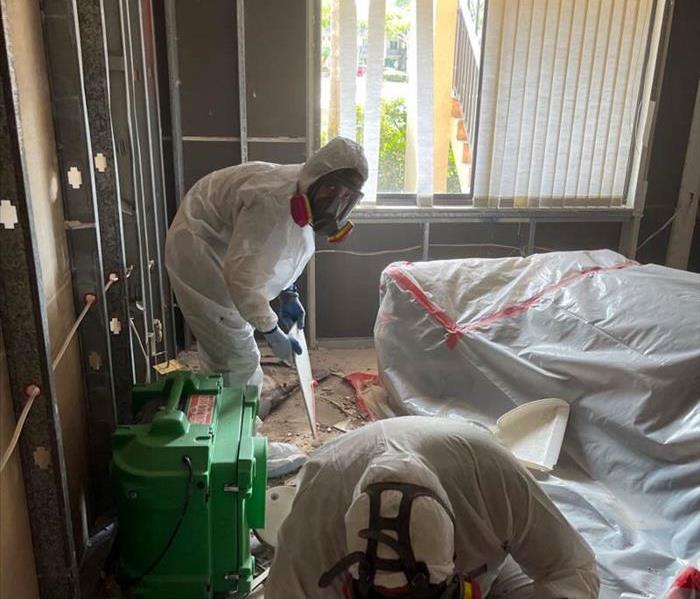Mold and Indoor Air Quality: Unveiling the Unseen Influence
3/6/2024 (Permalink)
Mold, a common intruder in indoor spaces, can silently impact the quality of the air we breathe. In this blog, we will explore the subtle ways mold affects indoor air quality.
The Unseen Presence
Mold, in its various forms, is a natural part of the environment. Indoors, it can take hold in damp or humid conditions, often flourishing in hidden corners, behind walls, or beneath flooring. While its visibility may be limited, its presence can have implications for indoor air quality.
Airborne Spores
Mold reproduces by releasing tiny spores into the air. These spores can become airborne and circulate throughout indoor spaces. While they may not be visible to the naked eye, the cumulative effect of airborne spores can contribute to changes in air quality.
Some molds produce mycotoxins, secondary metabolites that can be present in indoor environments. Mycotoxins are not always airborne, but when they are released, they can add a layer of complexity to the indoor air composition.
Mold Volatile Organic Compounds (MVOCs)
Mold can emit volatile organic compounds (VOCs) as it grows. These compounds, known as mold volatile organic compounds (MVOCs), can contribute to the overall scent or odor in indoor spaces. While not always harmful, they can influence the perceived air quality.
Mold can deteriorate materials such as wood, drywall, and fabrics. As it breaks down these substances, it releases particles into the air. The degradation of materials can contribute to the presence of particulate matter in indoor environments.
Detecting the Impact
While not directly related to air quality, visible signs of mold on surfaces may indicate a larger mold issue. Mold growth on walls, ceilings, or other surfaces can serve as a visual cue that mold may be affecting indoor air quality.
Mitigating Mold's Influence
Mold thrives in damp conditions. Controlling indoor humidity levels can help prevent the conditions conducive to mold growth, mitigating its potential impact on air quality.
Promptly addressing water leaks, moisture issues, or visible mold is essential in preventing mold from proliferating and impacting indoor air quality. Proper ventilation is crucial for maintaining good indoor air quality. Well-ventilated spaces help dilute and remove airborne particles, including mold spores.
While mold's impact on indoor air quality may not be immediately apparent, its presence can subtly influence the composition of the air we breathe. Implementing proactive measures such as humidity control, prompt remediation, and effective ventilation can create a balanced indoor environment that minimizes the potential impact of mold on air quality. Understanding the intricate relationship between mold and indoor air quality empowers individuals to make informed decisions for a healthier living environment. SERVPRO® is just a phone call away when you need expert assistance in mold removal, remediation, and restoring your home from mold damage.





 24/7 Emergency Service
24/7 Emergency Service